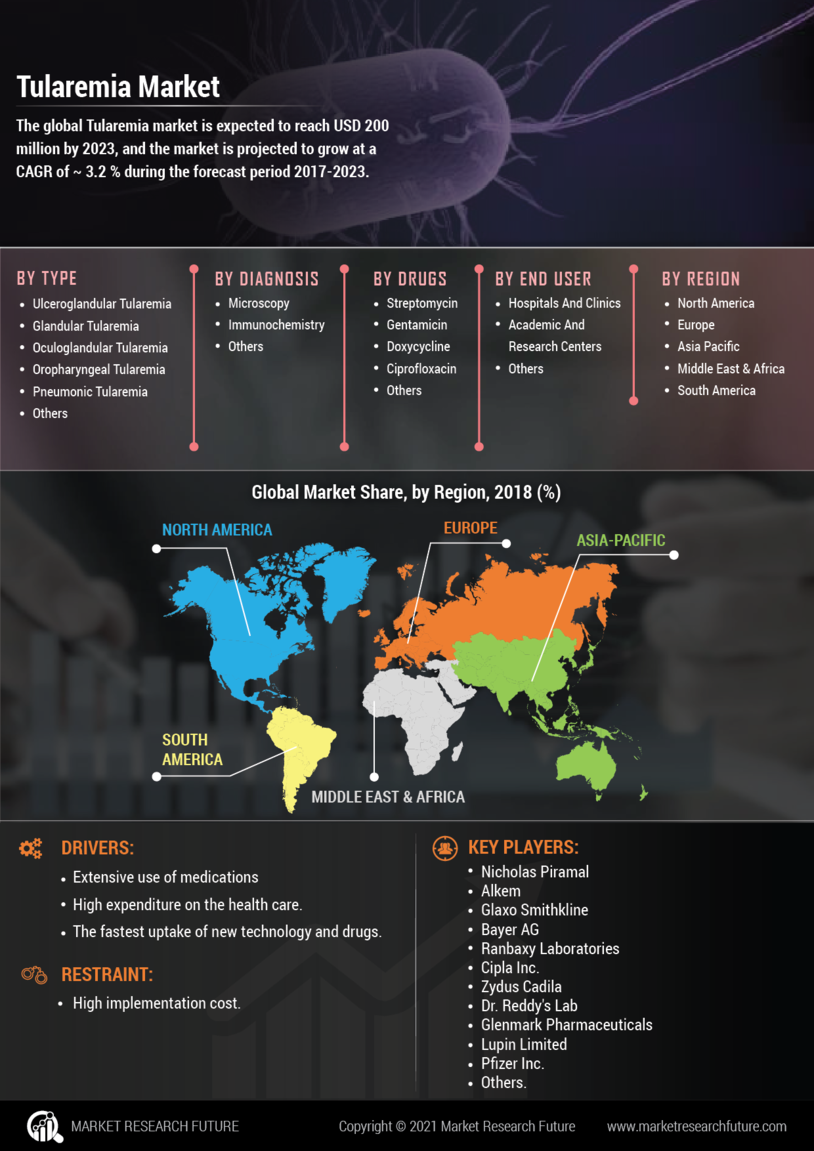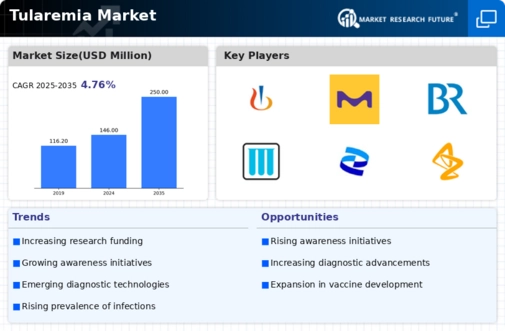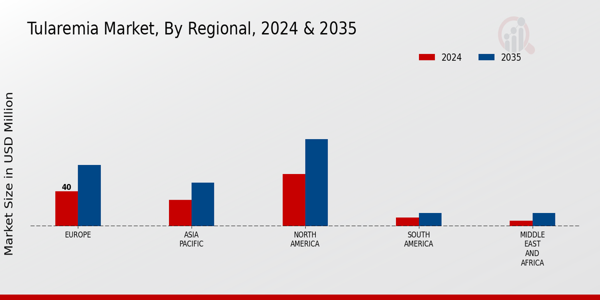Market Growth Projections
The Global Tularemia Market Industry is projected to experience substantial growth, with estimates indicating a market value of 146 USD Million in 2024 and a potential increase to 250 USD Million by 2035. This growth trajectory suggests a compound annual growth rate (CAGR) of 5.01% from 2025 to 2035. Such projections reflect the increasing awareness of tularemia, advancements in diagnostic technologies, and the rising incidence of cases, all of which contribute to a favorable market environment.
Rising Incidence of Tularemia Cases
The Global Tularemia Market Industry is experiencing growth due to an increase in reported cases of tularemia across various regions. Factors such as climate change and urbanization appear to contribute to the rising incidence of this zoonotic disease. For instance, the Centers for Disease Control and Prevention (CDC) indicates that the number of tularemia cases has been on the rise, particularly in rural areas where interactions between humans and wildlife are more frequent. This trend suggests a growing need for effective diagnostics and treatment options, potentially driving the market value to reach 146 USD Million in 2024.
Advancements in Diagnostic Technologies
Technological innovations in diagnostic methods are likely to propel the Global Tularemia Market Industry forward. Enhanced laboratory techniques, such as polymerase chain reaction (PCR) and serological assays, facilitate quicker and more accurate detection of tularemia. These advancements not only improve patient outcomes but also support public health initiatives aimed at controlling outbreaks. As healthcare providers increasingly adopt these technologies, the market is expected to expand significantly, with projections indicating a growth to 250 USD Million by 2035, reflecting a compound annual growth rate (CAGR) of 5.01% from 2025 to 2035.
Emerging Research and Development Activities
Ongoing research and development activities focused on tularemia are contributing to the expansion of the Global Tularemia Market Industry. Pharmaceutical companies and research institutions are exploring novel therapeutics and vaccines to combat this infectious disease. These initiatives not only aim to enhance treatment efficacy but also seek to address the challenges posed by antibiotic resistance. As new products enter the market, they may attract investment and interest from stakeholders, potentially leading to a more dynamic and competitive landscape in the coming years.
Increased Government Initiatives and Funding
Government initiatives aimed at controlling infectious diseases, including tularemia, are becoming more pronounced within the Global Tularemia Market Industry. Funding for research, surveillance, and public health campaigns is on the rise, as authorities recognize the importance of addressing zoonotic diseases. For example, various health departments are allocating resources to improve awareness and prevention strategies, which may lead to enhanced diagnostics and treatment options. This proactive approach could result in a more robust market landscape, fostering growth and innovation in the sector.
Growing Awareness Among Healthcare Professionals
The Global Tularemia Market Industry is benefiting from heightened awareness among healthcare professionals regarding the symptoms and transmission of tularemia. Educational programs and training sessions are being implemented to ensure that medical practitioners can recognize and respond to potential cases effectively. This increased knowledge base is crucial for early diagnosis and treatment, which can significantly reduce morbidity associated with the disease. As healthcare providers become more vigilant, the demand for diagnostic tools and treatment options is likely to rise, further stimulating market growth.











